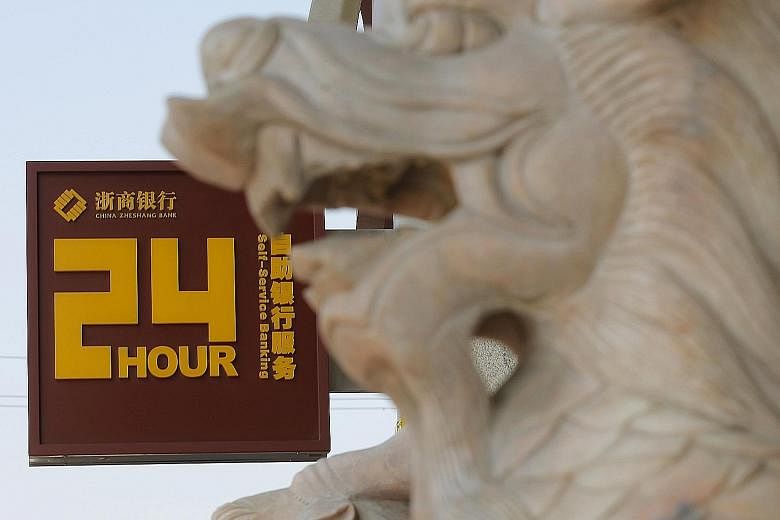It has been a long, dry spell in the initial public offering (IPO) market and the drought looks unlikely to end any time soon.
So far this year, only four IPOs have surfaced here - all of them on Catalist, the junior board of the Singapore Exchange (SGX). All four of them - Eindec Corporation, Secura Group, Anchor Resources and GS Holdings - were trading below their respective issue prices, as of last Thursday.
Their lacklustre performances are likely to dampen the ambitions of other companies planning to launch their own IPOs.
Singapore is not the only market which finds itself mired in such IPO lethargy. In New York, the IPO market is virtually shuttered, except for the listing of a small handful of bio-tech companies.
Hong Kong - billed as the world's largest IPO market last year - is also suffering a slow start to the year. It managed to attract only a cache of small listings until two regional Chinese lenders - China Zheshang Bank and Bank of Tianjin - launched their offers in recent weeks.
 Hong Kong's success in landing the China Zheshang Bank (above) and Bank of Tianjin IPOs may not reflect any revival of investor appetite. Both deals were priced near the low end of their indicative price ranges. PHOTO: REUTERS
Hong Kong's success in landing the China Zheshang Bank (above) and Bank of Tianjin IPOs may not reflect any revival of investor appetite. Both deals were priced near the low end of their indicative price ranges. PHOTO: REUTERS
Even its success in landing those two biggish mainland IPOs may not reflect any meaningful revival of investor appetite for new offerings.
Both the Zheshang and Tianjin deals were priced near the low end of their indicative price ranges. They had also allotted more than half of their offerings to so-called cornerstone investors who accept a six-month lock-up on the sale of their shares in return for a bigger allocation of the IPO.
But there is a twist in being a cornerstone investor now. In the halycon days when IPOs sold like hot cakes, the cornerstone ploy was used to attract high-profile names to IPO hopefuls, giving them an aura of respectability for being able to attract such powerful investors.
That, in turn, was meant to whet the appetite of other institutional and retail investors to subscribe to the new offerings.
But with the souring of investor appetite for IPOs, many of the new Chinese listings in Hong Kong have resorted to relying on "friends and family", such as fellow state-owned enterprises, as cornerstone investors to bolster their IPO order books.
This trend flags the difficulties of selling an IPO when the going is tough, even in a vibrant market such as Hong Kong, where investors are accustomed to taking much bigger risks on their investments.
It is a take-away which the SGX may want to bear in mind as it presses ahead with its objective to ensure that mainboard IPOs allocate at least 10 per cent of their offerings to retail investors, subject to a cap of $100 million.
Although that allocation will still makes up only a small fraction of an IPO offering, there may be difficulties in fulfilling the quota when retail investors are in a sour mood.
This may explain why companies and their underwriters are reluctant to allocate a bigger tranche of their IPOs to retail investors for fear that if these shares are undersubscribed, their reputation may take a blow while the IPO's share price comes under selling pressure upon its trading debut.
Some readers may recall that until 20 years ago, all IPOs were truly public offerings. Except for a small portion of shares reserved for staff and company associates, the rest of the IPO had to be made available for public subscription.
This system, however, changed with the onset of the 1997-1998 Asian financial crisis, when merchant banks and brokerages were forced to place out the bulk of the IPOs handled by them to clients because retail interest had dwindled to almost zero.
That sad state of affairs prevails to this day.
Hence, the SGX deserves the thumbs up for levelling the playing field for retail investors as it fights to get at least a 10 per cent allocation of the IPO for them.
But the exchange must be mindful of when it may want to impose such a measure if it does not want its efforts to backfire.
Given the uncertainties in the stock market right now, this may not be the best of times to press ahead with such a move.
If anything, the performances of recent IPO debutantes have not been encouraging. Data from Shareinvestor.com shows that of the 17 IPOs launched since January last year, 13 are under water. The losses which these counters have experienced since listing would only make retail investors leery of other IPOs for now.
Any bid to draw retail investors back to the IPO market - and this includes allocating them 10 per cent of any IPO - will have to wait for a decent pick-up in trading activities in the stock market.
In November 2009, CapitaMall Asia was able to pull off a $2.8 billion IPO as daily turnover on the local bourse reached $1.46 billion in the aftermath of the global financial crisis.
One year later, when Global Logistic Properties launched its US$3 billion offering, average daily stock turnover had risen to $2.1 billion.
But last year marked a lacklustre period for the stock market, with daily average turnover halving to $1.1 billion as compared with five years earlier. Not surprisingly, the year threw up only one mainboard listing - BHG Retail Reit, which raised a modest $275 million.
When will stock-market activities pick up again? This will depend on other factors such as a sharp pick-up in major regional economies such as China and Indonesia, which will lure international fund managers to look our way again.
Hence, waiting for the long, dry spell in the IPO market to break will lbe a test of patience.
If even big markets such as New York and Hong Kong are having problems in getting their IPO trains running, that speaks volumes about the state of the market across the globe.


